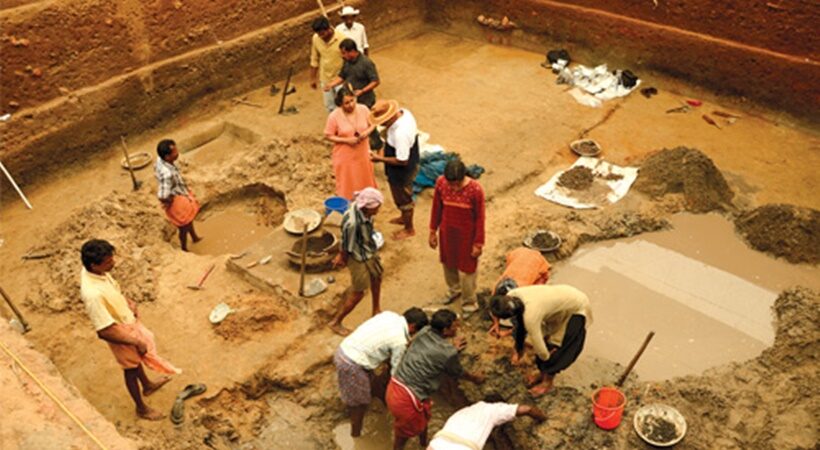Archaeological excavations at Pattanam, a small village from an hour’s drive from Kochi, tell a fascinating story of a cosmopolitan people who traded with the Roman Empire around two millennia ago. The finds point to the fabled port town of Muziris mentioned in the Greek text Periplus of the Erythraean Sea and Muciripattanam in the Tamil Sangam literature.
A decade ago, Pattanam was a quiet, nondescript village 30km north of Cochin. However, for many years, local children rummaging in the sand had found old glass beads and potsherds that pointed to ancient encounters. The name of the village itself is suggestive of its ancient pasts. The word Pattanam has its origins in Prakrit, meaning either a ferry or a port.
In 2007, the Kerala Council for Historical Research (KCHR), an autonomous body supported by the state government, began digging in the village and was immediately struck by the richness of their finds. Over nine years, the team of archaeologists unearthed over 1.29 lakh artefacts, some dating as far back as the Iron Age, of around 1500 BCE to 1000 BCE, suggesting trade with the Mediterranean and Arabian Peninsula at the peak of the Roman Empire around the 1st century CE.
The Pattanam excavations were the first-ever multi-disciplinary excavations undertaken in Kerala State. One of the major objectives of the excavation was to find the evidence for the fabled Indo-Roman trading port of Muziris on the Malabar Coast.
The archaeologists were surprised at the number of findings at Pattanam, including human bones, storage jars, a gold ornament, glass beads, stone beads, utilitarian objects made of stone, copper and iron, typical pottery, early Chera coins, brick wall, brick platform, ring well, wharf with bollards, and a six-meter long wooden canoe parallel to the wharf structure about 2.5 m below surface level. The consensus was made that the massive amount of material remains indicated a vast ‘urban’ settlement.
The excavations suggest that the site was first occupied by the indigenous Megalithic people, followed by the Roman contact in the Early Historic Period. The site was continuously inhabited at least from the 2nd century BCE to the 10th century CE. The maritime contacts of this region during the Early Historic Period seem to have been extensive as evidenced by a large number of Roman amphora shreds, a few terra sigillata shreds, Sassanian, Yemenite and other West Asian potteries.
Pattanam consists of a huge area of 70 hectares identified as an archaeological mound and even goes beyond it. According to the leading archaeologist PJ Cherian, it will take generations to complete the excavations. DNA extract analysis of human skeletal fragments conveys a cosmopolitan society. Of the 11 samples that were discovered at Pattanam, 4 suggested South Asian descent, 4 West Asian and 3 Mediterranean origins. Therefore, the population residing in Pattanam was extremely diverse and global.
Material remains from Gibraltar to Catalonia to Southern China were found in Pattanam and the artefacts were discovered at sites like Hepu in China and Khor Rori in Jordan. Pattanam has the Indian Ocean region’s largest cache of Mediterranean amphora jar sherds. Such culturally diverse material pointed to an ancient cosmopolitan port site of great historical importance.



















